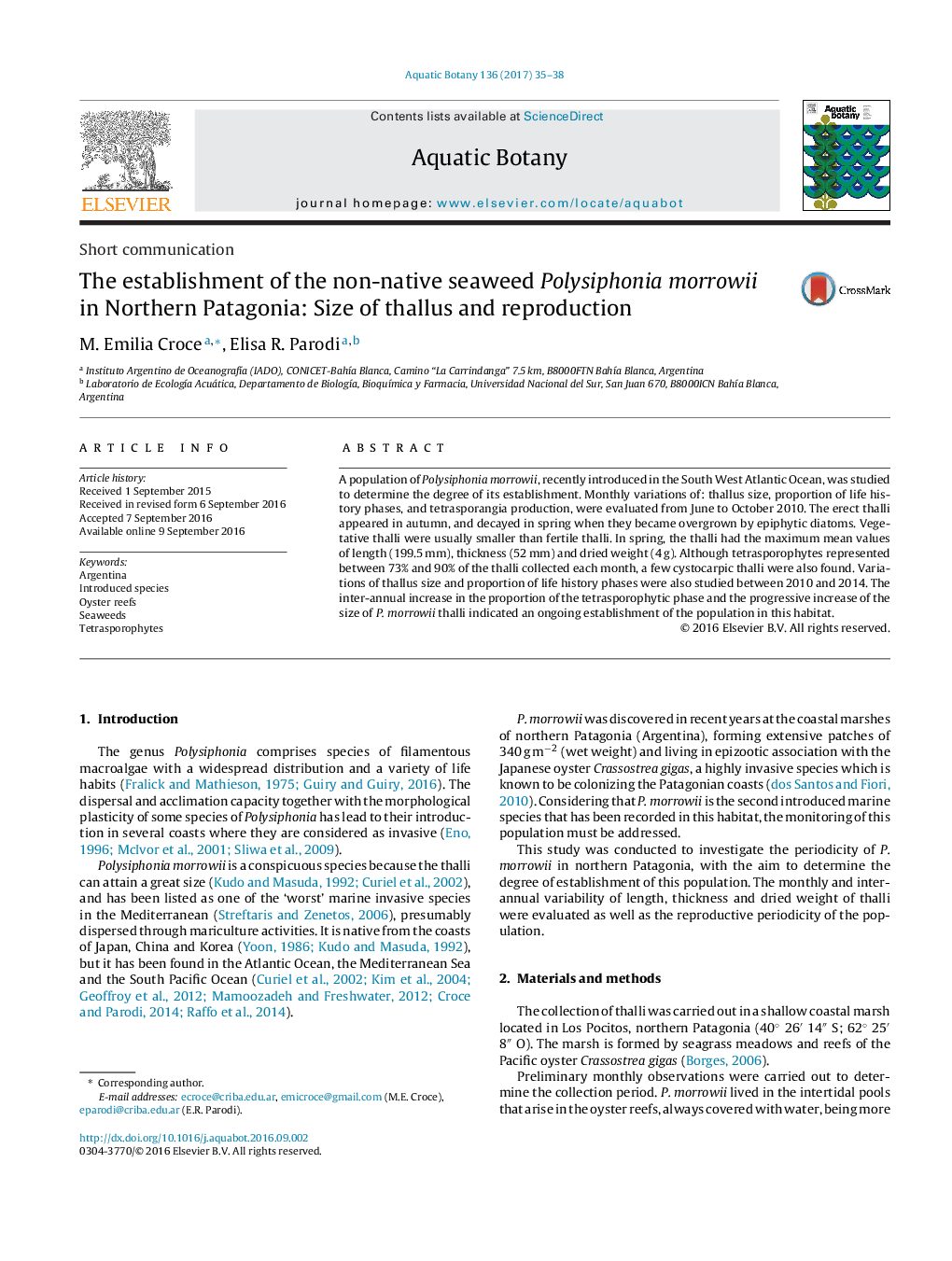| کد مقاله | کد نشریه | سال انتشار | مقاله انگلیسی | نسخه تمام متن |
|---|---|---|---|---|
| 4527518 | 1625806 | 2017 | 4 صفحه PDF | دانلود رایگان |
• P. morrowii erect thalli grew annually from perennial creeping prostrate axes.
• Fertile thalli were larger than vegetative thalli.
• Epiphytic diatoms covered the thalli of P. morrowii in spring.
• Tetrasporophytes were dominant during the whole period of study.
• P. morrowii reproduced mainly through vegetative growth in northern Patagonia.
A population of Polysiphonia morrowii, recently introduced in the South West Atlantic Ocean, was studied to determine the degree of its establishment. Monthly variations of: thallus size, proportion of life history phases, and tetrasporangia production, were evaluated from June to October 2010. The erect thalli appeared in autumn, and decayed in spring when they became overgrown by epiphytic diatoms. Vegetative thalli were usually smaller than fertile thalli. In spring, the thalli had the maximum mean values of length (199.5 mm), thickness (52 mm) and dried weight (4 g). Although tetrasporophytes represented between 73% and 90% of the thalli collected each month, a few cystocarpic thalli were also found. Variations of thallus size and proportion of life history phases were also studied between 2010 and 2014. The inter-annual increase in the proportion of the tetrasporophytic phase and the progressive increase of the size of P. morrowii thalli indicated an ongoing establishment of the population in this habitat.
Journal: Aquatic Botany - Volume 136, January 2017, Pages 35–38
